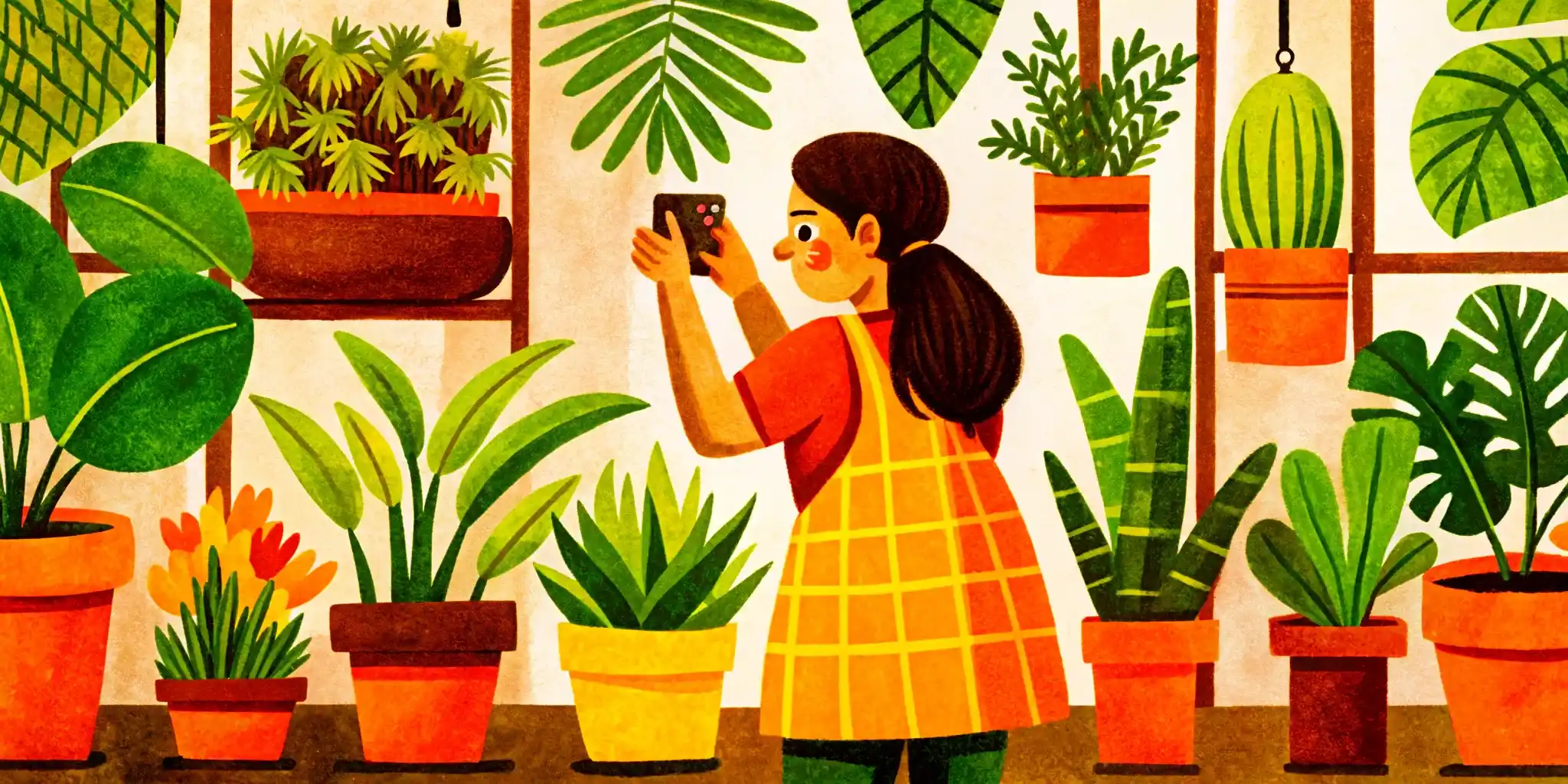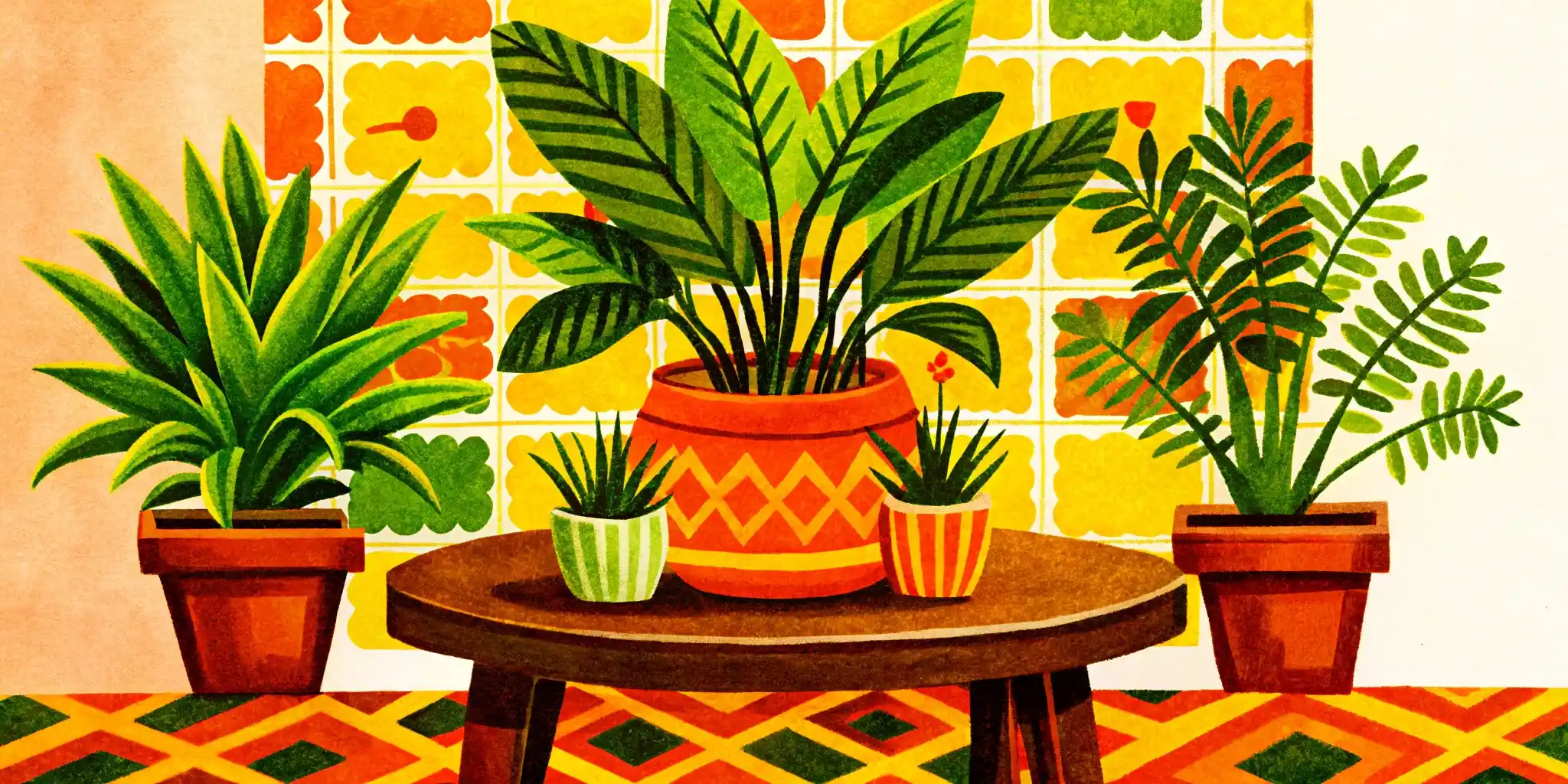Top 5 Apps to Measure Plant Light: Your Phone as a Plant Helper
When you start growing plants, you always ask if they have enough light, and too little light makes them grow long and weak, but too much light can burn them, so you need a good tool. Many people use their phone to measure light because professional meters are very expensive, so try a light meter for plants app.
Apps that measure light use the camera or sensors in your phone, and they show how bright the room is, and this is not perfect, but it is a quick and cheap way to see the general light situation.

The Main Limit
Before we see the list of apps, it is important to know that your phone measures lux, which is how bright the light looks to a person's eye, but a plant needs PPFD, and the phone sees green light very well, but the plant does not use this color much, so the phone can be very wrong if you use a pink grow light.
But the apps are still good for two things: you can compare how bright different windows are, and you can check the light in general to see if your plant is in total darkness.
Top 5 Apps to Measure Plant Light (2025)
App Name | Main Features | Total Score |
AI Plant Finder | Finding the plant type, checking sickness, and measuring light | ⭐⭐⭐⭐⭐ |
Photone Light Meter | The most exact change from lux to PPFD | ⭐⭐⭐⭐ |
Lux Light Meter Pro | A simple, good, and exact lux for common things | ⭐⭐⭐⭐ |
LSP.evo | A basic meter with helpful tips for different plant types | ⭐⭐⭐ |
PPFD Meter - Grow Light Meter | A tool for the grow box with the Daily Light Sum job | ⭐⭐⭐ |
AI Plant Finder
Pros
It is a complex way, so it finds sickness, gives advice for water, and helps you with many things
It is very easy and has clear pictures, so it is perfect for people who are new to growing plants
It has a big list of plants, so it knows what light each plant needs
Cons
The light measure is not very exact, so its numbers are lower than those from apps that you can set
Photone Light Meter
Pros
It has the best exactness, because it lets you choose the type of your lamp (LED, HPS, Sun) to make the Lux number change correctly into PPFD
It shows PPFD and DLI numbers, which are the numbers that professional growers use
It works well on both iOS and Android phones
Cons
It needs a setting, because for the best exactness, you may need a special white cap for the phone's camera or a white paper
It is harder for new people, because having too many settings can confuse a person who just wants to know if there is enough light
The free way has fewer lamp types for the calculation
Lux Light Meter Pro
Pros
It gives a clear Lux number, so it gives the most exact brightness measure without hard calculations
It has an easy design, with clear numbers and a way to save the lowest and highest number
The basic features are usually free to use
Cons
It is not for growing lights, because it does not work for pink or blue LED lamps, and the number will be much too low
It does not have PPFD, so it only shows "brightness for people" and not "food for plants"
It depends on the sensor, so different phone types show different numbers
LSP.evo
Pros
It has simple goals, so it shows if the current light is in the "low," "middle," or "high" area for the plant type you choose
It has clear groups, so it helps you quickly know if you must move your plant
It has nice pictures with easy-to-read charts
Cons
It gives a very simple idea, so it is good for house plants, but not good for growing that needs exact numbers
It does not have a setting for different lights, so it does not know that the phone sees different light colours in a different way
It has limited jobs, so it does not have other features like finding sickness or watering help
PPFD Meter - Grow Light Meter
Pros
It can find the DLI (Daily Light Sum), which is the total light the plant gets in 24 hours, and this is the best sign of how big the harvest will be
It is specialized, because it looks at the time the light is on like 18 hours on and 6 hours off, which is important for growers
It lets you compare different lamps to see which one works better
Cons
It can be hard to find, so it may only be on one phone type or in some places
It has a small use, so it is not good for measuring sunlight in an office
It needs knowledge, because to use DLI, you must know what DLI your plant needs at that time
The Role of AI in Light Checking
The AI works like a good farmer inside your phone, and it does not only say that you have 10000 lux, because it looks at the whole picture.
Checking Sickness with Light: You take a picture of your yellow leaf, and the AI does not just say "It needs food," because it checks that you measured 90000 lux, and it says this is probably a light burn, so you must move the lamp up fast.
Making the Colour Better: The AI uses a big list of information, and it knows that if your phone took a picture of a pink lamp, it must use a special number to make the Lux result correct, and this number is based on the type of lamp you told it about, so it tries to fix the "blind spot" of the phone.
Personal Advice: The AI knows that tomatoes need 45 DLI when they flower, but a house plant needs only 8 DLI, so it does not give simple advice, but it tells you that your tomato needs 6 more hours of light, or you must move the lamp lower.
How to Use the Light App in the Right Way
To get the most helpful result from your app, you must follow these easy rules.
Do Not Put Your Phone in the Dark
Do not put the phone on a table next to the plant, because the sensor must be pointing straight at the light source. You must hold the phone at the same height and angle as the top leaf of your plant.
Measure in Many Places
The light from a lamp is often not the same everywhere, so you must always measure the light:
In the middle under the lamp (the most light).
In the corners of the light area (the least light).
At the bottom leaves (to check if the whole plant has enough light).
If the difference is too big (for example, 40000 lux in the middle and 10000 lux in the corner), you must move the lamp higher so that the light is more the same everywhere.
Use the PPFD Mode (If the App Has It)
If your app lets you choose the lamp type (like "LED grow lights"), you must always do this, because this will help the app use the right number to change the measure, and its result will be much closer to the true PPFD than just the Lux number.

When It Is Time to Buy a Real Meter (PAR Meter)
Phone apps are a good start and a very nice tool for people who grow plants as a hobby, but there is a time when they are not exact enough, and this can cost you your harvest.
You must buy a real PAR meter when:
You started using strong LED lamps: If you paid money for expensive, strong LED lights that only make the small red and blue light, your phone is no longer a good helper, because its numbers will be so wrong that you cannot set the lamp in the best way.
You grow for money or for the biggest harvest: If you want to get the most plants from your space, you need very good exactness to count the DLI, and only a real PAR meter will give you these exact science numbers.
You see problems with growth that you do not understand: If the plant looks sick, but you are sure that water and food are good, the problem is probably the light, and only a good tool will help you find and fix the light mistake.
Start with an easy, clear app like AI Plant Finder, and use it to quickly check for sickness and compare brightness. But remember: the app shows "brightness for people," and the plant lives by the rules of photons, so for professional results, you will need an exact tool later.
Popular
In the world of finance, two key areas that often get intertwined are Corporate Finance and Investment Management. While both fields deal with managing and growing financial assets, they have distinct...
Dive into the dynamic world of tourism technology, exploring how location-based services are revolutionizing travel. Discover strategies for leveraging this tech to enhance traveler experiences, boost...
Discover how investing in old coins can diversify your portfolio with historical value and potential profit. Learn the best coins to invest in, tips for finding rare coins like coin identification app...


